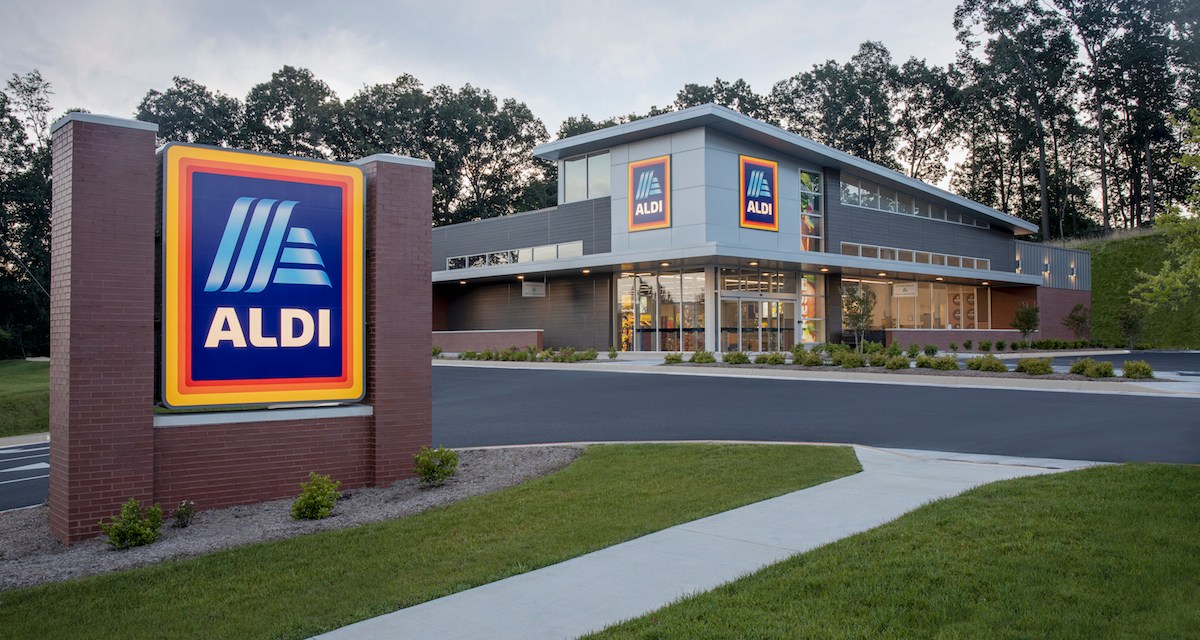How Aldi’s early investments are helping it take on Walmart and Kroger

Aldi is one of the few retailers who still has an ambitious slate of store openings planned for this year.
The discount grocer announced last week that it plans to open 100 more stores in the U.S this year. While Aldi will be opening new stores coast-to-coast, “we are growing significantly on the West Coast with plans to open more than 15 stores in Arizona and California this year,” a company spokesperson said in a statement.
Aldi currently has more than 2,000 stores in the U.S. this year, and says it’s on track to have more than 2,500 stores in the U.S. by the end of 2022. That would make Aldi the third largest grocer in the U.S. by store count, behind Kroger and Walmart.
But Aldi’s expansion strategy in the U.S. has gone beyond just opening more stores. Aldi has also been expanding its fresh food selection store in recent years, in order to appeal to a more affluent shopper. And, thanks to the e-commerce boom grocery experienced last year, Aldi has been investing more in curbside pickup in order to ensure it can still win over customers who have become accommodated to this way of shopping.
Aldi opened its first store in the U.S. in 1976, but only during the last decade has Aldi started heavily ramping up its store count in the U.S. Aldi was started in Germany in 1946, but was split up into two companies — Aldi Süd and Aldi Nord — due to a feud between the two brothers that founded the chain. The two companies remain separate to this day, and Aldi Süd is the division that operates the U.S. Aldi.
When Aldi first started ramping up its expansion in the U.S., it had to first “teach shoppers and consumers how to shop the Aldi way,” Simon Johnstone, director of retail insights at Kantar, told Modern Retail. It offers a unique store format, where in exchange for a more limited selection and fewer in-store amenities, they get cheaper prices. In 2012, Aldi launched an advertising campaign called “Aldi Truths” that featured slogans like “You can’t eat frills, so why pay for them?”; and “The same is always better when it costs less.” The goal of the campaign was to teach customers — who might initially have been put off by some of Aldi’s ways to cut costs, like requiring a $0.25 deposit to get a shopping cart — the benefits of that type of model.
Aldi’s stores are smaller on average then a traditional grocery store — they run 16,400 square feet, just over one-tenth the size of a typical Kroger store — and as such contain fewer products. More than 90% of the products Aldi carriers are products from its own private label brands, which also helps Aldi cut costs.
Ad position: web_incontent_pos1
But Aldi has also sought to expand its product offerings in order to appeal to more customers. In 2018, the chain announce that it planned to increase its fresh food selection by 40%. with an emphasis on more organic produce and fresh meats. Over the past couple of years, Aldi’s has introduced a private label line of plant-based meats, as well as more alcohol private label brands, including a line of hard seltzers in 2019.
“We’ve seen Aldi shift from being a smaller, discount store to a store that is focused on quality,” said Phil Lempert, founder of trade publication Supermarket Guru.
The other big change Aldi has made is invest more in e-commerce. Aldi first started piloting grocery delivery through Instacart in 2017, as well as curbside pickup. In its announcement last week, Aldi also said that it plans to plans to add curbside pickup services to 500 stores, to bring the number of Aldi U.S. stores that offer the service to 1,200 by the end of the year.
Bryan Gildenberg, svp of commerce at Ominicom Consulting Group, said that relying on Instacart for grocery delivery instead of building out a delivery service itself makes sense for a grocer like Aldi, which tries to have as little staff in store as possible. And while, “there’s clearly a labor expense” to offering curbside pickup, he thinks that it’s more doable for Aldi to invest in that service given its heavy emphasis on private label, “which gives them more room [to invest] than other retailers from a margin perspective.”
By contrast, Kroger and Walmart have invested heavily in building their own facilities and technology to better support grocery delivery and pickup in-house. Kroger announced a partnership with British online grocery Ocado three years ago to build ten automated warehouses in the U.S., while Walmart announced earlier this year that it would add automated warehouses to dozens of its stores to help pick and pack grocery orders.
Ad position: web_incontent_pos2
As Aldi inches closer to becoming a nationwide grocer, Walmart in particular is taking note. “I’ve been competing against Aldi for 20-plus years. They are fierce and they are good,” then-Walmart U.S. CEO Greg Foran said at an industry conference in 2019.
“The mistakes I think many retailers made in the past is assuming that Aldi is a price-only offer, and that’s the reason shoppers are going there is just because of price. They’ve certainly wised up to that,” said Johnstone. He said he’s seen more grocers now — in order to compete with Aldi and other grocers — “really invest in a private label range that’s about choice, not just about value.” Kroger is one such example, which in recent years has started to release more upscale private label items like meal kits and plant-based products.
But Aldi’s store expansion rate shows no signs of slowing down and grocers will likely continue to face more pressure to compete with Aldi’s selection.

